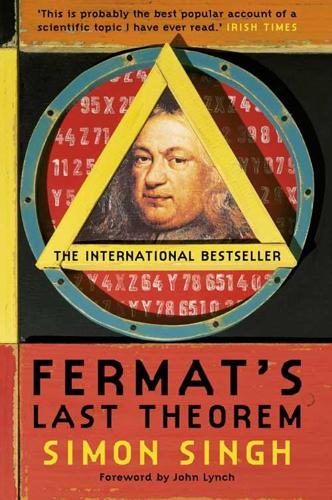
Fermat’s Last Theorem
by
Simon Singh
Published 1 Jan 1997
On that particular afternoon, there were not so very many people around, but enough for me to be uncertain as to which one was Andrew Wiles. After a few moments I picked out a shy-looking man, listening to the conversation around him, sipping tea, and indulging in the ritual gathering of minds that mathematicians the world over engage in at around four o’clock in the afternoon. He simply guessed who I was. It was the end of an extraordinary week. I had met some of the finest mathematicians alive, and begun to gain an insight into their world. But despite every attempt to pin down Andrew Wiles, to speak to him, and to convince him to take part in a BBC Horizon documentary film on his achievement, this was our first meeting.
…
For many, the goal of one unified mathematics is supreme, and this was a glimpse of just such a world. So in proving Fermat, Andrew Wiles had cemented some of the most important number theory of the post-war period, and had secured the base of a pyramid of conjectures that were built upon it. This was no longer simply solving the longest-standing mathematical puzzle, but was pushing the very boundaries of mathematics itself. It was as if Fermat’s simple problem, born at a time when maths was in its infancy, had been waiting for this moment. The story of Fermat had ended in the most spectacular fashion. For Andrew Wiles, it meant the end of professional isolation of a kind almost alien to maths, which is usually a collaborative activity.
…
Chapter 7 An elementary introduction to the Langlands programme, by Stephen Gelbart, Bulletin of the American Mathematical Society 10 (1984), 177–219. A technical explanation of the Langlands programme aimed at mathematical researchers. Modular elliptic curves and Fermat’s Last Theorem, by Andrew Wiles, Annals of Mathematics 141 (1995), 443–551. This paper includes the bulk of Wiles’s proof of the Taniyama–Shimura conjecture and Fermat’s Last Theorem. Ring-theoretic properties of certain Hecke algebras, by Richard Taylor and Andrew Wiles, Annals of Mathematics 141 (1995), 553–572. This paper describes the mathematics which was used to overcome the flaws in Wiles’s 1993 proof. You can find a set of websites about Fermat’s Last Theorem on Simon Singh’s website: [http://www.simonsingh.com] Index The pagination of this electronic edition does not match the edition from which it was created.

The Music of the Primes
by
Marcus Du Sautoy
Published 26 Apr 2004
Despite being a problem with its heart in the theory of numbers, the Riemann Hypothesis had for some years been showing unexpected resonances with problems in particle physics. Mathematicians were changing their travel plans to fly in to Princeton to share the moment. Memories were still fresh with the excitement of a few years earlier when an English mathematician, Andrew Wiles, had announced a proof of Fermat’s Last Theorem in a lecture delivered in Cambridge in June 1993. Wiles had proved that Fermat had been right in his claim that the equation xn + yn = zn has no solutions when n is bigger than 2. As Wiles laid down his chalk at the end of the lecture, the champagne bottles started popping and the cameras began flashing.
…
Bombieri has an unrivalled reputation for appreciating the ins and outs of the Riemann Hypothesis, but those who know him personally are also aware of his wicked sense of humour. Fermat’s Last Theorem had fallen foul of an April Fool prank that emerged just after a gap had appeared in the first proof that Andrew Wiles had proposed in Cambridge. With Bombieri’s email, the mathematical community had been duped again. Eager to relive the buzz of seeing Fermat proved, they had grabbed the bait that Bombieri had thrown at them. And the delights of forwarding email meant that the first of April had disappeared from the original source as it rapidly disseminated.
…
The proof of Fermat’s Last Theorem only helped to fuel the expectation that great problems could be solved. Mathematicians had enjoyed the attention that Wiles’s solution to Fermat had brought them as mathematicians. This feeling undoubtedly contributed to the desire to believe Bombieri. Suddenly, Andrew Wiles was being asked to model chinos for Gap. It felt good. It felt almost sexy to be a mathematician. Mathematicians spend so much time in a world that fills them with excitement and pleasure. Yet it is a pleasure they rarely have the opportunity to share with the rest of the world. Here was a chance to flaunt a trophy, to show off the treasures that their long, lonely journeys had uncovered.
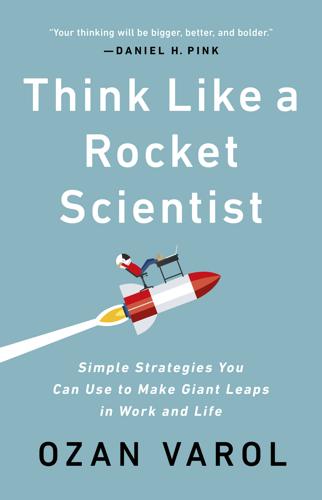
Think Like a Rocket Scientist: Simple Strategies You Can Use to Make Giant Leaps in Work and Life
by
Ozan Varol
Published 13 Apr 2020
Cai et al., “REM, Not Incubation, Improves Creativity by Priming Associative Networks,” Proceedings of the National Academy of Sciences 106, no. 25 (June 23, 2009): 10,130–10,134, www.pnas.org/content/106/25/10130.full. 41. Ben Orlin, “The State of Being Stuck,” Math With Bad Drawings (blog), September 20, 2017, https://mathwithbaddrawings.com/2017/09/20/the-state-of-being-stuck. 42. NOVA, “Solving Fermat: Andrew Wiles,” interview with Andrew Wiles, PBS, October 31, 2000, www.pbs.org/wgbh/nova/article/andrew-wiles-fermat. 43. Judah Pollack and Olivia Fox Cabane, Butterfly and the Net: The Art and Practice of Breakthrough Thinking (New York: Portfolio/Penguin, 2017), 44–45. 44. Cameron Prince, “Nikola Tesla Timeline,” Tesla Universe, https://teslauniverse.com/nikola-tesla/timeline/1882-tesla-has-ac-epiphany. 45.
…
The section on Fermat’s Last Theorem draws on the following sources: Stuart Firestein, Ignorance: How It Drives Science (New York: Oxford University Press, 2012); Simon Singh, Fermat’s Last Theorem: The Story of a Riddle That Confounded the World’s Greatest Minds for 358 Years (London: Fourth Estate, 1997); NOVA, “Solving Fermat: Andrew Wiles,” interview with Andrew Wiles, PBS, October 31, 2000, www.pbs.org/wgbh/nova/proof/wiles.html; Gina Kolata, “At Last, Shout of ‘Eureka!’ in Age-Old Math Mystery,” New York Times, June 24, 1993, www.nytimes.com/1993/06/24/us/at-last-shout-of-eureka-in-age-old-math-mystery.html; Gina Kolata, “A Year Later, Snag Persists in Math Proof,” New York Times, June 28, 1994, www.nytimes.com/1994/06/28/science/a-year-later-snag-persists-in-math-proof.html; John J.
…
Fermat died before supplying the missing proof for what came to be known as Fermat’s last theorem. The teaser he left behind continued to tantalize mathematicians for centuries (and made them wish Fermat had a bigger book to write on). Generations of mathematicians tried—and failed—to prove Fermat’s last theorem. Until Andrew Wiles came along. For most ten-year-olds, the definition of a good time doesn’t include reading math books for fun. But Wiles was no ordinary ten-year-old. He would hang out at his local library in Cambridge, England, and surf the shelves for math books. One day, he spotted a book devoted entirely to Fermat’s last theorem.
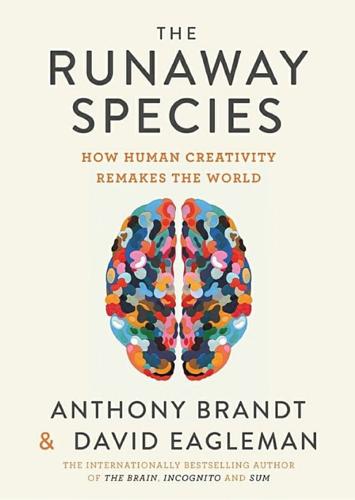
The Runaway Species: How Human Creativity Remakes the World
by
David Eagleman
and
Anthony Brandt
Published 30 Sep 2017
The Japan-India Traditional Performing Arts Exchange Project 2004. December 26, 2004. Accessed August 21, 2015, <http://noh.manasvi.com/noh.html> Norman, Donald A. The Design of Everyday Things: Revised and Expanded Edition. New York: Basic Books, 2013. NOVA, “Andrew Wiles on Solving Fermat.” PBS. November 1, 2000. Accessed May 11, 2016. <http://www.pbs.org/wgbh/nova/physics/andrew-wiles-fermat.html> Oates, Joyce Carol. “The Myth of the Isolated Artist.” Pyschology Today 6, 1973: 74–5. O’Bannon, Ricky. “By the Numbers: Female Composers.” Baltimore Symphony Orchestra. Accessed May 11, 2016. <https://www.bsomusic.org/stories/by-the-numbers-female-composers.aspx> Oden, Maria, Yvette Mirabal, Marc Epstein, and Rebecca Richards-Kortum.
…
Hall, Michelangelo’s Last Judgment. 7 Richard Steinitz, György Ligeti: Music of the Imagination (Boston: Northeastern University Press, 2003). 8 T.J. Pinch and Karin Bijsterveld, The Oxford Handbook of Sound Studies (New York: Oxford University Press, 2012). 9 NOVA, “Andrew Wiles on Solving Fermat,” PBS, November 1, 2000, accessed May 11, 2016, <http://www.pbs.org/wgbh/nova/physics/andrew-wiles-fermat.html> 10 Simon Singh, Fermat’s Enigma: The Epic Quest to Solve the World’s Greatest Mathematical Problem (New York: Walker, 1997). 11 Michael J. Gelb, How to Think like Leonardo Da Vinci (New York: Dell, 2000). 12 Dean Keith Simonton, “Creative Productivity: A Predictive and Explanatory Model of Career Trajectories and Landmarks,” Psychological Review 104 no. 1 (1997): p. 66–89, <http://dx.doi.org/10.1037/0033-295X.104.1.66> 13 Yasuyuki Kowatari et al., “Neural Networks Involved in Artistic Creativity,” Human Brain Mapping 30 no. 5 (2009): pp. 1678-90, <http://dx.doi.org/10.1002/hbm.20633> 14 Suzan-Lori Parks, 365 Days/365 Plays (New York: Theater Communications Group, Inc., 2006). 11.
…
Hall, Michelangelo’s Last Judgment. 7 Richard Steinitz, György Ligeti: Music of the Imagination (Boston: Northeastern University Press, 2003). 8 T.J. Pinch and Karin Bijsterveld, The Oxford Handbook of Sound Studies (New York: Oxford University Press, 2012). 9 NOVA, “Andrew Wiles on Solving Fermat,” PBS, November 1, 2000, accessed May 11, 2016, <http://www.pbs.org/wgbh/nova/physics/andrew-wiles-fermat.html> 10 Simon Singh, Fermat’s Enigma: The Epic Quest to Solve the World’s Greatest Mathematical Problem (New York: Walker, 1997). 11 Michael J. Gelb, How to Think like Leonardo Da Vinci (New York: Dell, 2000). 12 Dean Keith Simonton, “Creative Productivity: A Predictive and Explanatory Model of Career Trajectories and Landmarks,” Psychological Review 104 no. 1 (1997): p. 66–89, <http://dx.doi.org/10.1037/0033-295X.104.1.66> 13 Yasuyuki Kowatari et al., “Neural Networks Involved in Artistic Creativity,” Human Brain Mapping 30 no. 5 (2009): pp. 1678-90, <http://dx.doi.org/10.1002/hbm.20633> 14 Suzan-Lori Parks, 365 Days/365 Plays (New York: Theater Communications Group, Inc., 2006). 11.
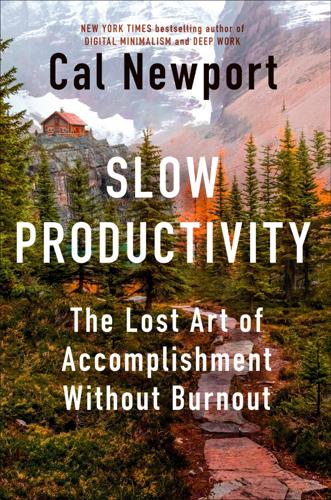
Slow Productivity: The Lost Art of Accomplishment Without Burnout
by
Cal Newport
Published 5 Mar 2024
Proposition: Limit the Big In seeking inspiration for how to implement the first principle of slow productivity—to do fewer things—it makes sense to start with a famous example of professional simplification: mathematician Andrew Wiles’s pursuit of Fermat’s last theorem, a deceptively simple number theory problem first identified in the seventeenth century by the French polymath Pierre de Fermat that had resisted solutions for centuries.[*] As detailed in science writer Simon Singh’s impressively researched book, Fermat’s Enigma, the story of this theorem’s eventual solution begins in dramatic fashion. The scene opens on a library in the 1960s. A ten-year-old Andrew Wiles comes across a book that introduces him to the theorem. He’s entranced. “Here was a problem that I, a ten-year-old, could understand,” he told Singh.
…
Wiles, who at the age of ten had declared he would one day solve Fermat’s last theorem, had all of a sudden just become one of the most qualified people in the world to do so. “I was electrified. I knew that moment that the course of my life was changing,” he said. “It meant that my childhood dream was now a respectable thing to work on. I just knew that I could never let that go.” What makes Andrew Wiles relevant to slow productivity is how he reacts to this fateful decision to focus all of his energy on this singular pursuit. As Singh summarizes, the young mathematician immediately began reducing his commitments: Wiles abandoned any work that was not directly relevant to proving Fermat’s Last Theorem and stopped attending the never-ending round of conferences and colloquia.
…
For his final lecture, members of the media, tipped off by conference attendees about what was coming, filled the back of the room. When he got to the end of his proof, Wiles quipped, “I think I’ll stop here.” Then the camera flashes began. * * * — Assuming you’re not a tenured mathematics professor, the specific actions Andrew Wiles took to simplify his workload are likely not that relevant. What is useful for our discussion, however, is the general approach he deployed. To prepare himself to focus on a single large and meaningful project, Wiles limited large pursuits and commitments that would compete for his time. Crucially, he was systematic in this reduction.
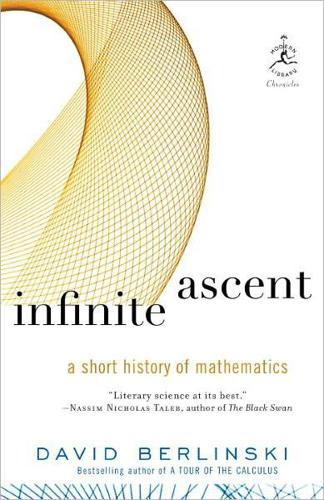
Infinite Ascent: A Short History of Mathematics
by
David Berlinski
Published 2 Jan 2005
Very good mathematicians were intrigued and often obsessed. Amateurs and cranks, all of them curiously aware of my e-mail address, busied themselves with crackpot proofs, some of them fiendishly ingenious. For more than three centuries the conjecture remained unyielding. And then in 1993, the English mathematician Andrew Wiles announced a proof, one retrospectively validating Fermat. The old boy had been right after all. Wiles’ proof ran to more than two hundred pages and it made use of an immense body of modern mathematics. A first version, announced in a very dramatic setting at Oxford University, contained an error.
…
The fourth-order equation V = x2y2 + y4/4, for example, describes an undulating surface in a three-dimensional space. Analytical geometry may be conducted in four dimensions, if need be, and although the results cannot easily be seen—let us be honest: They cannot be seen at all—the analysis is much the same. When Andrew Wiles offered his proof of Fermat’s conjecture, he used an immense array of tools, but at the very center of his proof a tingling trail led backward to Descartes, for what he had succeeded in proving was the Taniyama-Shimura conjecture, a thesis about elliptical equations and modular forms, one that in the complexity of its formulation hid that old, shrub-covered trail between the form of the discriminant and various curves in the plane.
…
Grothendieck has since given up mathematics and is said to be resident in a cave somewhere in the south of France, where he is occupied by various ecological issues. The classification of the finite simple groups, I suppose, is next, and after that the Taniyama-Shimura conjecture and the proof of Fermat’s famous theorem, the work collectively of Andrew Wiles, Ken Ribet, Barry Mazur, and Gerhard Frey. But this list, resembling as it does various trite accounts of what is in and what is out, or what is hot and what is not, could easily be rewritten in a dozen different ways, evidence that mathematics no longer has what for so long it had, and that is a stable center.
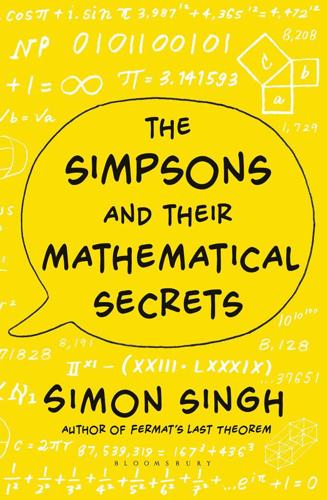
The Simpsons and Their Mathematical Secrets
by
Simon Singh
Published 29 Oct 2013
Perhaps the theorem’s most famous cameo is in a 1989 episode of Star Trek: The Next Generation titled “The Royale,” in which Captain Jean-Luc Picard describes Fermat’s last theorem as “a puzzle we may never solve.” However, Captain Picard was wrong and out of date, because the episode was set in the twenty-fourth century and the theorem was actually proven in 1995 by Andrew Wiles at Princeton University.5 Wiles had dreamed about tackling Fermat’s challenge ever since he was ten years old. The problem then obsessed him for three decades, which culminated in seven years of working in complete secrecy. Eventually, he delivered a proof that the equation xn + yn = zn (n > 2) has no solutions.
…
In other words, the Doctor is tacitly acknowledging that Wiles’s proof exists, but he rightly does not accept that it is Fermat’s proof, which he considers to be the “real one.” Perhaps the Doctor went back to the seventeenth century and obtained the proof directly from Fermat. So, to summarize, in the seventeenth century, Pierre de Fermat states that he can prove that the equation xn + yn = zn (n > 2) has no whole number solutions. In 1995, Andrew Wiles discovers a new proof that verifies Fermat’s statement. In 2010, the Doctor reveals Fermat’s original proof. Everyone agrees that the equation has no solutions. Thus, in “The Wizard of Evergreen Terrace,” Homer appears to have defied the greatest minds across almost four centuries. Fermat, Wiles, and even the Doctor state that Fermat’s equation has no solutions, yet Homer’s blackboard jottings present us with a solution: 3,98712 + 4,36512 = 4,47212 You can check it yourself with a calculator.
…
He even had a personal link to the proof, because he had attended some lectures by Ken Ribet while he was a graduate student at the University of California, Berkeley, and Ribet had provided Wiles with a pivotal stepping-stone in his proof of Fermat’s last theorem. Cohen obviously knew that Fermat’s equation had no solutions, but he wanted to pay homage to Pierre de Fermat and Andrew Wiles by creating a solution that was so close to being correct that it would apparently pass the test if checked with only a simple calculator. In order to find his pseudosolution, he wrote a computer program that would scan through values of x, y, z, and n until it found numbers that almost balanced.

Prime Obsession:: Bernhard Riemann and the Greatest Unsolved Problem in Mathematics
by
John Derbyshire
Published 14 Apr 2003
A problem that can be stated in a few plain words, yet which defies proof by the best mathematical talents for decades or—in the case of Goldbach’s Conjecture or Fermat’s Last Theorem—for centuries, has an irresistible attraction for most mathematicians. They know that they can achieve great fame by solving it, as Andrew Wiles did when he proved Fermat’s Last Theorem. They know, too, from the history of their subject, that even failed attempts can generate powerful new results and techniques. And there is, of course, the Mallory factor. When the New York Times asked George Mallory why he wanted to climb Mount Everest, Mallory replied: “Because it’s there.”
…
On the other hand, by the mid-1890s it had been 10 years since Stieltjes’s announcement, and a lot of people must have been entertaining doubts. Not doubts about Stieltjes’s character; it is a very common thing for a mathematician to believe he has proved a result, only to find, going over his arguments (or more commonly, having them peer-reviewed), that there is a logical flaw in them. This happened with Andrew Wiles’s first proof of Fermat’s Last Theorem in 1993. It happens somewhat more dramatically to the narrator of Philibert Schogt’s 2000 novel The Wild Numbers. Nobody would have thought the worse of Stieltjes if this had been the case, this being much too common an event in mathematical careers. But where was that proof?
…
“Oh,” said Peter, “You should speak to my colleague Nick” (i.e., Nicholas Katz, also a professor at Princeton, though mainly an algebraic geometer). “Nick hates big oh. Won’t use it.” I swallowed this and made a note of it, thinking I might find some place for it in this book. Then that evening I happened to be talking to Andrew Wiles, who knows Sarnak and Katz both very well. I mentioned Katz’s not liking big oh. “That’s all nonsense,” said Wiles. “They’re just teasing you. Nick uses it a lot.” Sure enough, he used it in a lecture the next day. Funny sense of humor, mathematicians. IV. So much for big oh. Now, the Möbius function.

The Creativity Code: How AI Is Learning to Write, Paint and Think
by
Marcus Du Sautoy
Published 7 Mar 2019
But when DeepMind’s algorithm discovered how to do something with a very similar flavour, it triggered an existential crisis. If these algorithms can play Go, the mathematician’s game, can they play the real game: could they prove theorems? One of my crowning pinnacles as a mathematician was getting a theorem published in the Annals of Mathematics. It is the journal in which Andrew Wiles published his proof of Fermat’s Last Theorem. It is the mathematician’s Nature. So how long would it be before we might expect to see a paper in the Annals of Mathematics authored by an algorithm? In order to play a game it’s important to understand the rules. What am I challenging a computer to do?
…
Fermat proved why if you raise a number to the power of a prime bigger than that number and then divide the result by the prime, the remainder will be the number you started with. Euler proved why when you raise e to the power of i times pi the answer is –1. Gauss proved that every number can be written as the sum of at most three triangular numbers (writing ‘Eureka’ next to his discovery). And eventually my colleague Andrew Wiles proved that Fermat was right in his hunch that the equations xn + yn = zn don’t have solutions when n>2. These breakthroughs are representative of what it is a mathematician does. A mathematician is not a master calculator but a constructor of proofs. So here is the challenge at the heart of this book: why can’t a computer join the ranks of Fermat, Gauss and Wiles?
…
The gaps were pluggable, but the referees and editors had missed them. If a proof is important, scrutiny generally wheedles out any gaps or errors. That is why the Millennium Prizes are released within two years of publication: twenty-four months is regarded as enough time for a mistake to reveal itself. Take Andrew Wiles’s first proof of Fermat’s Last Theorem. Referees spotted a mistake before it ever made it to print. The miracle was that Wiles was able to repair the mistake with the help of his former student Richard Taylor. But how many incorrect proofs might be out there leading us to build our mathematical edifices on falsehoods?
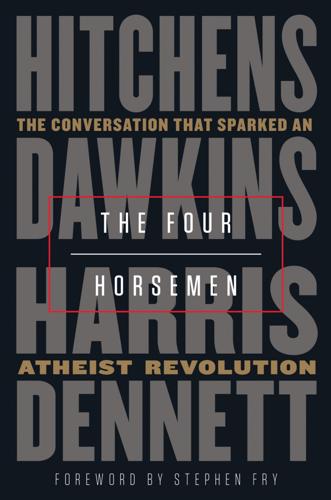
The Four Horsemen
by
Christopher Hitchens
,
Richard Dawkins
,
Sam Harris
and
Daniel Dennett
Published 19 Mar 2019
DAWKINS: But what we actually do when we, who are not physicists, take on trust what physicists say, is that we have some evidence that suggests that physicists have looked into the matter – that they’ve done experiments, that they’ve peer-reviewed their papers, that they’ve criticized each other, that they’ve been subjected to massive criticism from their peers in seminars and in lectures. DENNETT: And remember the structure that’s there, too; it’s not just that there’s peer review. But it’s very important that [science is] competitive. For instance, when Fermat’s last theorem was proved by— DAWKINS: Andrew Wiles. DENNETT:—Andrew Wiles, the reason that those of us who said, ‘Forget it, I’m never going to understand that proof,’ the reason that we can be confident that it really is a proof is that— HARRIS: Nobody wanted him to get there first. [Laughter] DENNETT: —every other mathematician who was competent in the world was very well motivated to study that proof.

Elliptic Tales: Curves, Counting, and Number Theory
by
Avner Ash
and
Robert Gross
Published 12 Mar 2012
For example, the fact that the Lfunction of an elliptic curve is equal to the L-function of a certain modular form is the essence of the great theorem proved by the cumulative work in (Wiles, 1995; Taylor and Wiles, 1995; Breuil et al., 2001). In turn, that equality can be used to prove Fermat’s Last Theorem, as British mathematician Andrew Wiles (1953–) did. Dirichlet’s L-functions can be thought of as a generalization of the Riemann zeta-function ζ (s). In the next section, we will describe a monster generalization of ζ (s) called the Hasse–Weil zeta-function. (The German mathematician Helmut Hasse lived from 1898 to 1979. The French mathematician André Weil lived from 1906 to 1998.)
…
Math., 212, 7–25. ———1965. Notes on elliptic curves. II, J. Reine Angew. Math., 218, 79–108 Breuil, Christophe, Brian Conrad, Fred Diamond, and Richard Taylor. 2001 On the modularity of elliptic curves over Q: Wild 3-adic exercises, J. Amer. Math. Soc., 14, no. 4, 843–939. Carlson, James, Arthur Jaffe, and Andrew Wiles (eds.), The Millennium Prize Problems, Clay Mathematics Institute, Cambridge, MA, 2006. Available at http://www.claymath.org/library/monographs/MPP.pdf. Conrad, Keith. 2008. The congruent number problem, Harv. Coll. Math. Rev., 2, no. 2, 58–74. Available at http://thehcmr.org/node/17. Courant, Richard, and Herbert Robbins, What is Mathematics?
…
Silverman, Joseph H., The Arithmetic of Elliptic Curves, 2nd ed., Graduate Texts in Mathematics, Vol. 106, Springer, Dordrecht, 2009. Silverman, Joseph H., and John Tate, Rational Points on Elliptic Curves, Undergraduate Texts in Mathematics, Springer-Verlag, New York, 1992. Taylor, Richard, and Andrew Wiles. 1995. Ring-theoretic properties of certain Hecke algebras, Ann. of Math. (2), 141, no. 3, 553–572. Thomas, Ivor (trans.), Greek Mathematical Works, revised, Vol. 1, Harvard University Press, Loeb Classical Library, Cambridge, MA, 1980. Titchmarsh, Edward Charles, The Theory of the Riemann Zeta-Function, 2nd ed., The Clarendon Press, Oxford University Press, New York, 1986.
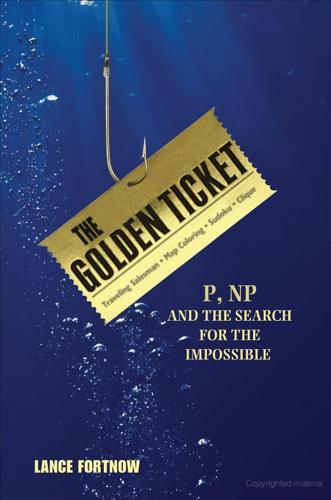
The Golden Ticket: P, NP, and the Search for the Impossible
by
Lance Fortnow
Published 30 Mar 2013
After Karp, computer scientists started to realize the incredible importance of the P versus NP problem, and it dramatically changed the direction of computer science research. Today, P versus NP has become a critical question not just in computer science but in many other fields, including biology, medicine, economics, and physics. The P versus NP problem has achieved the status of one of the great open problems in all of mathematics. Following the excitement of Andrew Wiles’s 1994 proof of Fermat’s Last Theorem, the Clay Mathematics Institute decided to run a contest for solutions to the most important unsolved mathematical problems. In 2000, the Clay Institute listed seven Millennium Problems and offered a $1 million bounty for each of them. 1. Birch and Swinnerton-Dyer conjecture 2.
…
Fermat never mentioned this proof again, so it is likely he never had a true solution. The problem gained great notoriety as it became the classic unsolvable math puzzle. Kids like me dreamed of being the first person to solve this famous problem. One of those kids grew up and did just that. In 1994 the Princeton mathematician Andrew Wiles, building on a long series of papers in number theory, developed a proof of Fermat’s claim and became an instant celebrity, at least as much of a celebrity as a mathematician could be. This chapter won’t show how to solve the P versus NP problem, or this would have been a very different book.
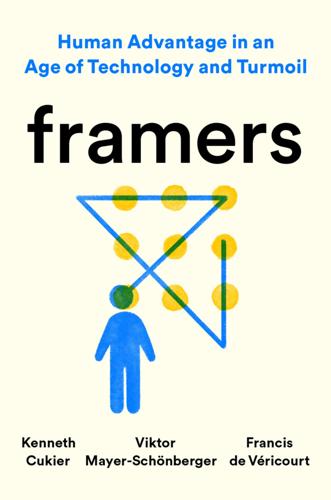
Framers: Human Advantage in an Age of Technology and Turmoil
by
Kenneth Cukier
,
Viktor Mayer-Schönberger
and
Francis de Véricourt
Published 10 May 2021
Doudna later said that at the moment of realization, the hair literally stood up at the back of her neck. She was immediately hit by the new mental model that emerged in her mind. “Those insightful moments don’t come along so often,” she explained, “which is why we cherish them as scientists.” The British mathematician Andrew Wiles, whose reframing cracked Fermat’s Last Theorem, a mathematical conjecture that had remained unsolved for centuries, likens the process to “entering a house in the dark and bumping into the furniture, until one finds a switch for the light and you can finally see where you are.” Reframing was such an extraordinary moment for him that when recounting it on television years later, the otherwise stoic Brit became so flushed with emotion that he asked to stop the interview.
…
City Proves It’s Possible to Reform the Police,” All Things Considered, NPR, June 8, 2020, transcript and audio, https://www.npr.org/2020/06/08/872470135/new-police-force-from-scratch-n-j-city-proves-its-possible-to-reform-the-police. Jennifer Doudna on her discovery: Sabin Russell, “Cracking the Code: Jennifer Doudna and Her Amazing Molecular Scissors,” California, Winter 2014, https://alumni.berkeley.edu/california-magazine/winter-2014-gender-assumptions/cracking-code-jennifer-doudna-and-her-amazing. Andrew Wiles and Fermat’s Last Theorem: “Fermat’s Last Theorem,” BBC video, 50 minutes, accessed November 4, 2020, https://www.bbc.co.uk/programmes/b0074rxx. Einstein’s quote: Albert Einstein and Max Born, The Born-Einstein Letters, trans. Irene Born (New York: Walker, 1971). On unlearning: See, e.g.: Viktor Mayer-Schönberger, Delete—The Virtue of Forgetting in the Digital Age (Princeton, NJ: Princeton University Press, 2009).
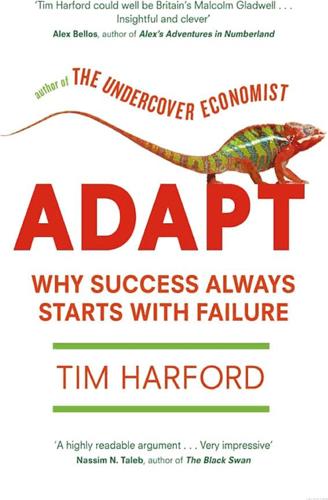
Adapt: Why Success Always Starts With Failure
by
Tim Harford
Published 1 Jun 2011
Christensen, The Innovator’s Solution (Harvard Business School Press, 2003), p. 198. 243 Whole structure of Virgin Group has always been: Richard Branson, Business Stripped Bare (Virgin Books, 2008), pp. 169–214. 244 ‘I’ll be damned if I permit’: anonymous officer quoted in John Nagl, Learning to Eat Soup with a Knife (University of Chicago Press, 2005), p. 172. 8 Adapting and you 247 ‘He was not a very careful person’: Shimura is quoted in ‘Andrew Wiles and Fermat’s Last Theorem’, MarginalRevolution.com, 29 August 2010, http://www.marginalrevolution.com/marginalrevolution/2010/08/andrew-wiles-and-fermats-last-theorem.html 247 ‘Let us try for once not to be right’: Tristan Tzara214. , 1918. 247 ‘Stupefyingly clichéd and almost embarrassingly naïve’: Hedy Weiss, ‘Good music, flashy moves can’t fill emotional void’, Chicago Sun- Times, 21 July 2002. 247 ‘Crazily uneven’: Michael Phillips, ‘“Movin’ Out”?
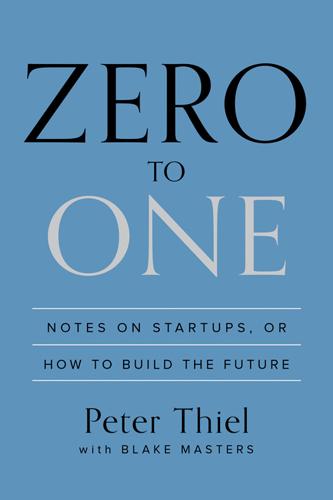
Zero to One: Notes on Startups, or How to Build the Future
by
Peter Thiel
and
Blake Masters
Published 15 Sep 2014
When it was exposed that Dunn arranged a series of illegal wiretaps to identify the source, the backlash was worse than the original dissension, and the board was disgraced. Having abandoned the search for technological secrets, HP obsessed over gossip. As a result, by late 2012 HP was worth just $23 billion—not much more than it was worth in 1990, adjusting for inflation. THE CASE FOR SECRETS You can’t find secrets without looking for them. Andrew Wiles demonstrated this when he proved Fermat’s Last Theorem after 358 years of fruitless inquiry by other mathematicians—the kind of sustained failure that might have suggested an inherently impossible task. Pierre de Fermat had conjectured in 1637 that no integers a, b, and c could satisfy the equation an + bn = cn for any integer n greater than 2.

A Beautiful Mind
by
Sylvia Nasar
Published 11 Jun 1998
The signal event of the summer institute turned out to be the surprise announcement, within a day or two of the start of the meetings, of Milnor’s proof of the existence of exotic spheres.2 For the mathematicians gathered there, it had the same electrifying effect as the announcement of a solution of Fermat’s Last Theorem by Andrew Wiles of Princeton University four decades later. It stole Nash’s thunder. Nash reacted to the news of Milnor’s triumph with a display of adolescent petulance.3 The mathematicians were all camping out in a student dormitory and eating their meals in the cafeteria. Nash protested by grabbing gigantic portions.
…
This is too much for Alicia. “You have to be fair to Johnny,” she returns. Nash says nothing. But later in the evening he goes to some lengths to make amends. He brings an offering, maps of Mexico, that he found in books on the Borels’ shelves, to Alicia. He takes the opportunity — during a conversation about Andrew Wiles’s successful proof of Fermat’s Last Theorem — to point out that Johnny had done some “classical” number theory in graduate school. Johnny had published “one correct result, one incorrect, but the correct one was a breakthrough of sorts,” he tells the other guests. Alicia responds by paying attention, by taking in what he means.
…
Felix Browder, interview, 11.10.95. 7. Harold Kuhn, interview, 7.95. 8. Ibid. 9. John Nash, plenary lecture, op. cit. 10. Elias Stein, interview, 12.28.95. 11. Cohen, interview. 12. E. T. Bell, Men of Mathematics, op. cit. 13. Enrico Bombieri, interview, 12.6.95. 14. Bell, op. cit. 15. Andrew Wiles, professor of mathematics, Princeton University, personal communication, 6.97. 16. Lars Hörmander, interview, 2.13.97. 17. F. Browder, interview. 18. John Forbes Nash, Jr., Les Prix Nobel 1994, op. cit. 19. Bell, op. cit. 20. Ibid. 21. Ibid. 22. Jacob Schwartz, professor of computer science, Courant Institute, interview, 1.29.96. 23.
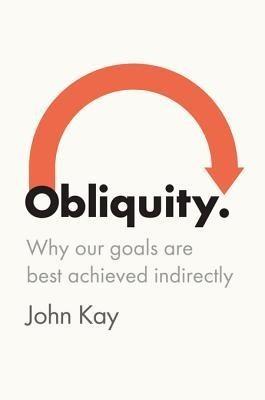
Obliquity: Why Our Goals Are Best Achieved Indirectly
by
John Kay
Published 30 Apr 2010
They are a response to the everyday pleasure we take in obliquity. Most people regard arithmetic as a boring task—they do not enjoy long division or calculating the square root of a large number—but many like mathematical puzzles. The most famous such problem—Fermat’s Last Theorem—continues to intrigue. The 1994 proof by Andrew Wiles demands powerful computational tools.4 But Fermat hinted at a simpler solution that has not yet been rediscovered. Perhaps there is an oblique approach that, like Brunelleschi’s egg, or the presentation of perspective, or the Japanese assault on Singapore, is direct once thought of. If we sometimes recast problems before we begin, more often we revise our specification in the process of actually tackling them.
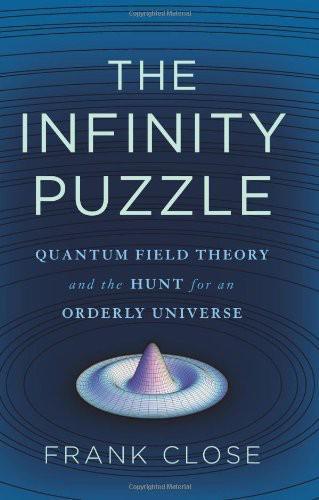
The Infinity Puzzle
by
Frank Close
Published 29 Nov 2011
When the editor told me of the typo, I was astonished; not at my naïveté (I was still too naive) but that rotating a multiplication sign through 45 degrees to turn it into “+” had such profound consequences. That defeat convinced me there was no point in continuing with Fermat’s puzzle. A few years later, Andrew Wiles came across Fermat’s theorem in a book at his local library. Like me, he was then ten years old; like me, he decided to solve it; unlike me, he succeeded—though it took him more than a decade of dedicated work some thirty years later. ’t Hooft had the perseverance of Wiles, or at least more than most.
…
The remarkable emergence of ’t Hooft, a mere student solving the puzzle that had defeated great masters, gained its own life. Over the years, Veltman’s role tended to be overlooked. What ’t Hooft had achieved was indeed remarkable, but no one, least of all himself, would claim that he did it alone. My comparison with Fermat’s Last Theorem is an example of the media oversimplification, not least because Andrew Wiles solved Fermat on his own; ’t Hooft’s triumph, by contrast, was the culmination of a vast effort. In our analogy of climbing Everest, one could say that Veltman had made a map of the route, prepared the equipment, and almost reached the summit before ’t Hooft started. When Veltman, nearing the summit, had been faced with an impassable crevasse, ’t Hooft found a route, but even then it was Veltman’s tools that established this to be the way and got them successfully through.
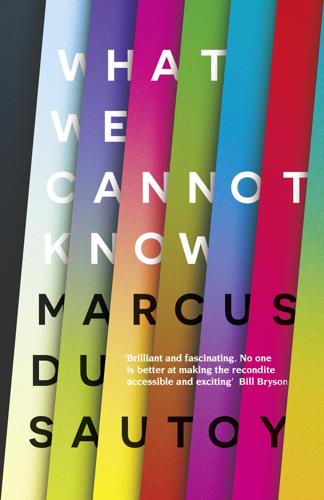
What We Cannot Know: Explorations at the Edge of Knowledge
by
Marcus Du Sautoy
Published 18 May 2016
But it is often a much easier task to find solutions than to prove that you will never find numbers which satisfy any of Fermat’s equations. Fermat famously thought he had a solution but scribbled in the margin of his copy of Diophantus’ Arithmetica that the margin was too small for his remarkable proof. It took another 350 years before my Oxford colleague Andrew Wiles finally produced a convincing argument to explain why you will never find whole numbers that solve Fermat’s equations. Wiles’s proof runs to over one hundred pages, in addition to the thousands of pages of preceding theory that it is built on. So even a very wide margin wouldn’t have sufficed.
…
The importance of the unattained destination is illustrated by the strange reaction that many mathematicians have when a great mathematical theorem is finally proved. Just as there is a sense of sadness when you finish a great novel, the closure of a mathematical quest can have its own sense of melancholy. I think we were enjoying the challenge of Fermat’s equations so much that there was a sense of depression mixed with the elation that greeted Andrew Wiles’s solution of this 350-year-old enigma. It is important to recognize that we must live with uncertainty, with the unknown, the unknowable. Even if we eventually manage to produce a theory which describes the way the universe works, we will never know that there isn’t another chapter in the story, waiting for us to discover it.
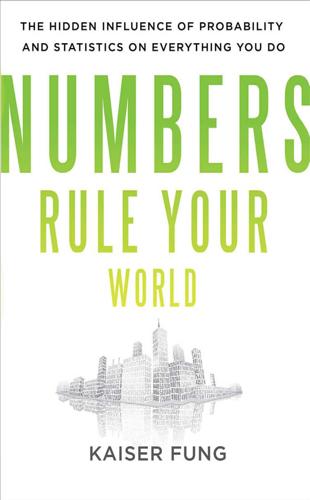
Numbers Rule Your World: The Hidden Influence of Probability and Statistics on Everything You Do
by
Kaiser Fung
Published 25 Jan 2010
In addition to purely technical yardsticks, applied scientists have goals that are societal, as with the Minnesota highway engineers; or psychological, as with the Disney queue managers; or financial, as with hurricane insurers and loan officers. The pursuit of pure science is rarely limited by time; as an extreme example, mathematician Andrew Wiles meticulously constructed his proof of Fermat’s last theorem over seven years. Such luxury is not afforded the applied scientist, who must deliver a best effort within a finite time limit, typically in the order of weeks or months. External factors, even the life cycle of green produce or the pipeline of drug innovations, may dictate the constraint on time.
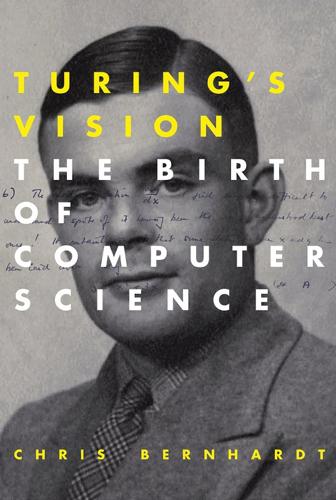
Turing's Vision: The Birth of Computer Science
by
Chris Bernhardt
Published 12 May 2016
In fact, there are no positive integer solutions to xn + yn = zn when n is larger than 2. This is the famous Fermat’s Last Theorem. Fermat wrote the statement in the margin of a book with the comment that he had a marvelous proof, but that the margin wasn’t large enough for him to include it. In 1994, 357 years later, Andrew Wiles finally proved it. Most mathematicians don’t believe that Fermat had a legitimate proof. The result should be more properly called Fermat’s conjecture or Wiles’s theorem. 3. All three of the problems we looked at have the property that there was an algorithm that works in the case when the answer of the decision problem was yes, but not in the case when the answer was no.
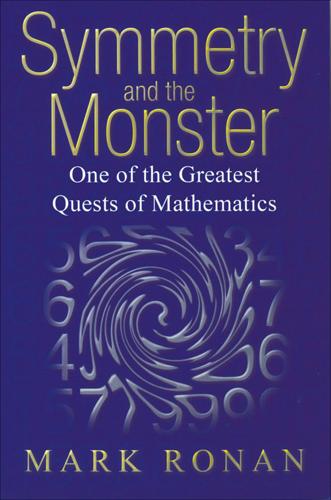
Symmetry and the Monster
by
Ronan, Mark
Published 14 Sep 2006
Chapter 3: Irrational Solutions 33 Fauvel and Gray, A History of Mathematics, pp. 504, 505. 35 Fauvel and Gray, A History of Mathematics, p. 503. Fauvel and Gray, A History of Mathematics, p. 503. Chapter 4: Groups 45 Quoted in Yu. I. Manin, Mathematics and Physics, Birkhäuser, 1981, p. 35. 46 A proof of Fermat’s Last Theorem was finally given by Andrew Wiles in the mid-1990s. Chapter 5: Sophus Lie 53 A. Stubhaug, The Mathematician Sophus Lie, English translation, Springer, 2002, p. 3. 54 Stubhaug, The Mathematician Sophus Lie, p. 9. 55 Stubhaug, The Mathematician Sophus Lie, p. 10. 56 Stubhaug, The Mathematician Sophus Lie, p. 12. 63 There are three degrees of freedom for the velocity (direction of motion and speed), and three for the spin (direction and amount of spin).

The Nature of Technology
by
W. Brian Arthur
Published 6 Aug 2009
Typically the mathematician “sees” or struggles to see one or two overarching principles: conceptual ideas that if provable provide the overall route to a solution. To be proved, these must be constructed from other accepted subprinciples or theorems. Each part moves the argument part of the way. Andrew Wiles’s proof of Fermat’s theorem uses as its base principle a conjecture by the Japanese mathematicians Taniyama and Shimura that connects two main structures he needs, modular forms and elliptic equations. To prove this conjecture and link the components of the argument, Wiles uses many subprinciples.
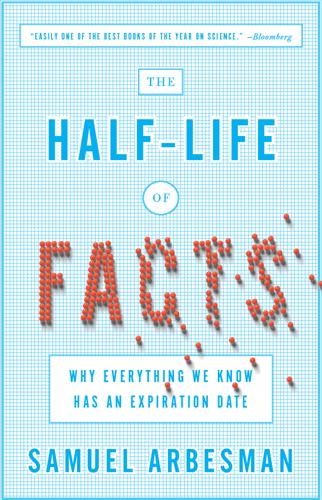
The Half-Life of Facts: Why Everything We Know Has an Expiration Date
by
Samuel Arbesman
Published 31 Aug 2012
Instead, in one of the most maddening episodes in math history, he scribbled this idea in the margins of a book and wrote that he had a brilliant proof, but, alas, the margin was too small to contain it. We now think he might have been mistaken. But no one had found any numbers greater than 2 that fit the equation since he wrote this statement. So it was assumed to be true, but no one could prove it. This elegant problem in number theory had gone unproven since the seventeenth century, until Andrew Wiles completed a proof in 1995, using pages and pages of very complex math, which would most certainly not have fit in Fermat’s margin. But, crucially, along the way, mathematicians proved other, smaller, proofs in their quest to crack Fermat’s Last Theorem. When finally solved, whole new pieces of math were involved in the construction of the proof.
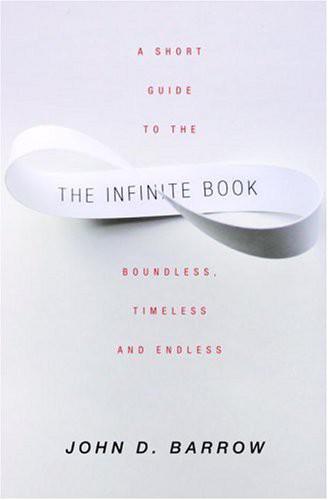
The Infinite Book: A Short Guide to the Boundless, Timeless and Endless
by
John D. Barrow
Published 1 Aug 2005
This is not as exciting to mathematicians as it might sound. Mathematicians are not only interested in whether conjectures like Goldbach’s are true or false, they are interested in the forms of reasoning needed to prove it. They want to see new types of argument. A classic example was the proof of Fermat’s Last Theorem by Andrew Wiles and Richard Taylor.18 The truth of Fermat’s conjecture emerged as a particular case of a much more general result that opened up types of proof and alternative formulations of old questions. A ‘proof ’ by direct search would provide no new insights of that sort. It would, in effect, be like looking up the answer in the back of the book.

Calling Bullshit: The Art of Scepticism in a Data-Driven World
by
Jevin D. West
and
Carl T. Bergstrom
Published 3 Aug 2020
It states that there are no three distinct integers a, b, and c such that an + bn = cn for integer values of n greater than 2. For centuries, mathematicians tried to prove this conjecture—and failed. Finally, after years of solitary work developing major advances in several areas of mathematics, British mathematician Andrew Wiles came up with a proof drawing on recent mathematical discoveries and running 127 pages in length. It was an epic achievement, with numerous setbacks including the discovery of a mistake in the proof that set Wiles back another two years. That’s what it takes to prove Fermat’s last theorem true.
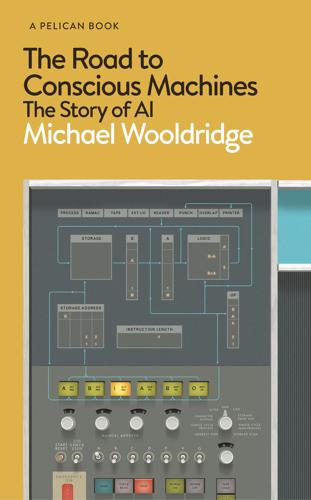
The Road to Conscious Machines
by
Michael Wooldridge
Published 2 Nov 2018
And answering this fundamental question was the daunting challenge that Turing set himself in 1935 – and which he triumphantly resolved, with dizzying speed. When we think of deep mathematical problems, we imagine that any solution to them must involve complex equations and long proofs. And sometimes, this is indeed the case – when the British mathematician Andrew Wiles famously proved Fermat’s Last Theorem in the early 1990s, it took years for the mathematical community to understand the hundreds of pages of his proof, and become confident that it was indeed correct. By these standards, Turing’s solution to the Entscheidungsproblem was positively eccentric. Apart from anything else, Turing’s proof is short and comparatively accessible (once the basic framework has been established, the proof is really just a few lines long).

Human Compatible: Artificial Intelligence and the Problem of Control
by
Stuart Russell
Published 7 Oct 2019
Mathematical Guarantees We will want, eventually, to prove theorems to the effect that a particular way of designing AI systems ensures that they will be beneficial to humans. A theorem is just a fancy name for an assertion, stated precisely enough so that its truth in any particular situation can be checked. Perhaps the most famous theorem is Fermat’s Last Theorem, which was conjectured by the French mathematician Pierre de Fermat in 1637 and finally proved by Andrew Wiles in 1994 after 357 years of effort (not all of it by Wiles).1 The theorem can be written in one line, but the proof is over one hundred pages of dense mathematics. Proofs begin from axioms, which are assertions whose truth is simply assumed. Often, the axioms are just definitions, such as the definitions of integers, addition, and exponentiation needed for Fermat’s theorem.
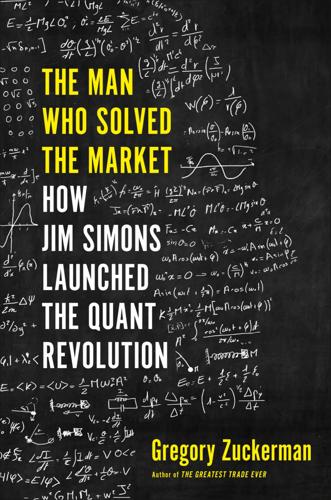
The Man Who Solved the Market: How Jim Simons Launched the Quant Revolution
by
Gregory Zuckerman
Published 5 Nov 2019
“Jim was a restless man with a restless mind,” Kochen says. Ax focused the bulk of his energies on math, a world that is more competitive than most realize. Mathematicians usually enter the field out of a love for numbers, structures, or models, but the real thrill often comes from being the first to make a discovery or advance. Andrew Wiles, the Princeton mathematician famous for proving the Fermat conjecture, describes mathematics as a journey through “a dark unexplored mansion,” with months, or even years, spent “stumbling around.” Along the way, pressures emerge. Math is considered a young person’s game—those who don’t accomplish something of significance in their twenties or early thirties can see their chances slip away.1 Even as Ax made progress in his career, anxieties and irritations built.
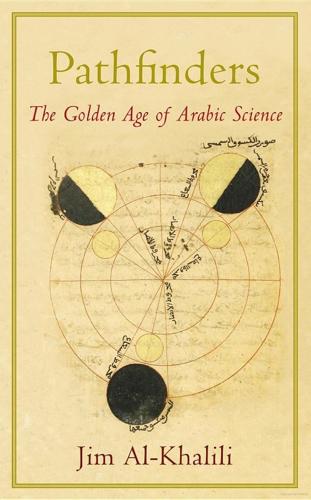
Pathfinders: The Golden Age of Arabic Science
by
Jim Al-Khalili
Published 28 Sep 2010
Stated mathematically, it says that there are no whole number values for x, y and z such that xn + yn = zn, when n is greater than 2. For instance, there are no whole numbers for which the sum of the cubes of two integers equals the cube of another (unless they are all equal to zero, of course). A proof was finally found by the British mathematician Andrew Wiles in 1995, and I for one have no intention of checking his method, since it runs to more than a hundred pages and took him seven years to complete. None of this should be credited to Diophantus, of course, but what it is meant to show is that his interest, like Fermat’s, was more in the properties of numbers than in the algebraic manipulation of symbols.
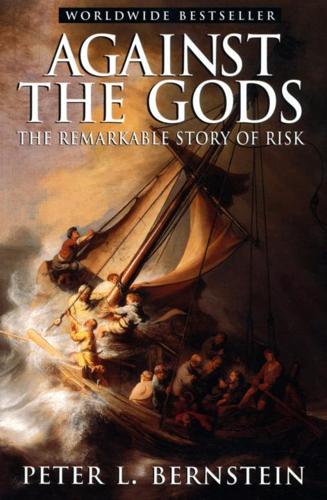
Against the Gods: The Remarkable Story of Risk
by
Peter L. Bernstein
Published 23 Aug 1996
And then Fermat wrote: "I have a truly marvelous demonstration of this proposition which this margin is too narrow to contain."12 With this simple comment he left mathematicians dumbfounded for over 350 years as they struggled to find a theoretical justification for what a great deal of empirical experimentation proved to be true. In 1993, an English mathematician named Andrew Wiles claimed that he had solved this puzzle after seven years of work in a Princeton attic. Wiles's results were published in the Annals of Mathematics in May 1995, but the mathematicians have continued to squabble over exactly what he had achieved. Fermat's Last Theorem is more of a curiosity than an insight into how the world works.

The Man From the Future: The Visionary Life of John Von Neumann
by
Ananyo Bhattacharya
Published 6 Oct 2021
David Hilbert and Wilhelm Ackermann, 1928, Grundzüge der theoretischen Logik, Julius Springer, Berlin (later translated as Principles of Mathematical Logic). 21. E.g. set M = the property of being an orange, P = the property of being the colour green, and insert into the syllogism above. 22. Andrew Wiles of the University of Oxford proved Fermat’s last theorem in 1994, more than 350 years after Pierre de Fermat stated the problem and asserted he had a ‘marvellous proof’ which his margin was too narrow to contain. Wiles’s proof ran to over 100 pages. Goldbach’s conjecture remains unproven. 23.

When Einstein Walked With Gödel: Excursions to the Edge of Thought
by
Jim Holt
Published 14 May 2018
Or it can be seen as a Rosetta stone that would allow the mathematical tribes on these various islands—number theorists, topologists, algebraic geometers—to talk to one another and pool their conceptual resources. The Langlands conjectures are largely unproved so far. (An exception is the Taniyama-Shimura conjecture, framed in the 1950s by a pair of Japanese mathematicians and proved in the 1990s by the Englishman Andrew Wiles, who thereby established the truth of Fermat’s last theorem.) Are these mysterious conjectures even true? There is an almost Platonic confidence among mathematicians that they must be. As Ian Stewart has remarked, the Langlands program is “the sort of mathematics that ought to be true because it was so beautiful.”
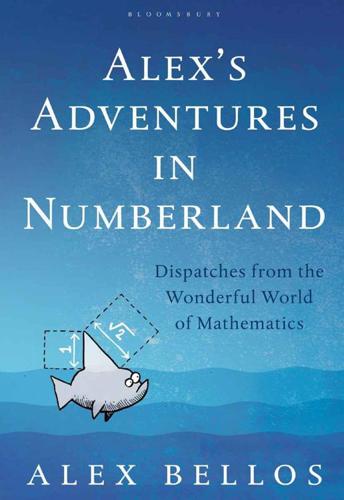
Alex's Adventures in Numberland
by
Alex Bellos
Published 3 Apr 2011
His jottings in Arithmetica may have been an indication that he had a proof, or he may have believed he had a proof, or he may have been trying to be provocative. In any case, his cheeky sentence was fantastic bait to generations of mathematicians. The proposition became known as Fermat’s Last Theorem and was the most famous unsolved problem in maths until the Briton Andrew Wiles cracked it in 1995. Algebra can be very humbling in this way – ease in stating a problem has no correlation with ease in solving it. Wiles’s proof is so complicated that it is probably understood by no more than a couple of hundred people. Improvements in mathematical notation enabled the discovery of new concepts.

How I Became a Quant: Insights From 25 of Wall Street's Elite
by
Richard R. Lindsey
and
Barry Schachter
Published 30 Jun 2007
To my mind, the greatest mathematicians are like explorers—they search for solutions to problems that no one knows how to solve and they risk achieving nothing. A terrific example of this is the famous Fermat’s Last Theorem.3 Fermat stated his famous theorem around 1637 and great mathematicians of every generation tried to solve it until Andrew Wiles finally cracked it in the early 1990s after famously spending seven years working on the problem in secret and alone. Why did he do it? Why does any mathematician work on hard problems? Consider the stakes. In the case of Fermat’s Last Theorem, no one knew for sure whether we could solve the problem at all.

The Greatest Show on Earth: The Evidence for Evolution
by
Richard Dawkins
Published 21 Sep 2009
Fermat’s Last Theorem, like the Goldbach Conjecture, is a proposition about numbers to which nobody has found an exception. Proving it has been a kind of holy grail for mathematicians ever since 1637, when Pierre de Fermat wrote in the margin of an old mathematics book, ‘I have a truly marvellous proof . . . which this margin is too narrow to contain.’ It was finally proved by the English mathematician Andrew Wiles in 1995. Before that, some mathematicians think it should have been called a conjecture. Given the length and complication of Wiles’s successful proof, and his reliance on advanced twentieth-century methods and knowledge, most mathematicians think Fermat was (honestly) mistaken in his claim to have proved it.
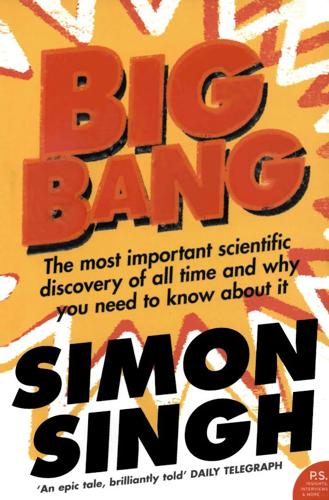
Big Bang
by
Simon Singh
Published 1 Jan 2004
I am just grateful that this postscript essay has at least allowed me the opportunity to get these three curiosities out of my system. Read on Have You Read? Other titles by Simon Singh Fermat’s Last Theorem In 1963 a schoolboy browsing in his local library stumbled across the world’s greatest mathematical problem: Fermat’s Last Theorem, a puzzle that has baffled mathematicians for over 300 years. Aged just ten, Andrew Wiles dreamed that he would crack it. Wiles’s lifelong obsession with a seemingly simple challenge set by a long-dead Frenchman is an emotional tale of sacrifice and extraordinary determination. In the end Wiles was forced to work in secrecy and isolation for seven years, harnessing all the power of modern maths to achieve his childhood dream.
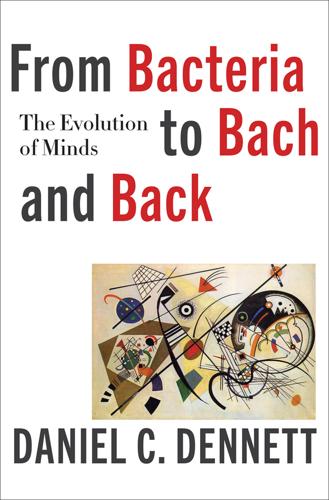
From Bacteria to Bach and Back: The Evolution of Minds
by
Daniel C. Dennett
Published 7 Feb 2017
Today peer-reviewed papers with hundreds of coauthors issue from CERN and other bastions of Big Science. Often none of the team members can claim to have more than a bird’s-eye-view comprehension of the whole endeavor, and we have reached a point where even the most brilliant solo thinkers are often clearly dependent on their colleagues for expert feedback and confirmation. Consider Andrew Wiles, the brilliant Princeton mathematician who in 1995 proved Fermat’s Last Theorem, a towering achievement in the history of mathematics. A close look at the process he went through, including the false starts and unnoticed gaps in the first version of his proof, demonstrates that this triumph was actually the work of many minds, a community of communicating experts, both collaborating and competing with each other for the glory, and without the many layers of achieved and battle-tested mathematics on which Wiles’s proof depended, it would have been impossible for Wiles or anyone else to judge that the theorem had, in fact, been proven.101 If you are a lone wolf mathematician and think you have proved Fermat’s Last Theorem, you have to consider the disjunction: Either I have just proved Fermat’s Last Theorem or I am going mad, and since history shows that many brilliant mathematicians have been deluded in thinking they had succeeded, you have to take the second alternative seriously.
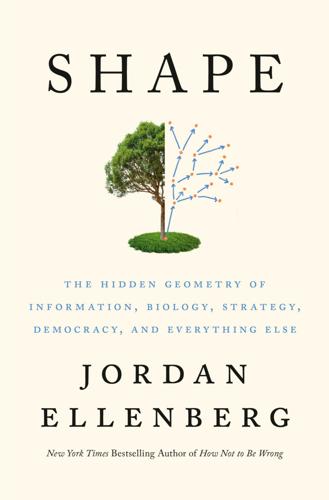
Shape: The Hidden Geometry of Information, Biology, Strategy, Democracy, and Everything Else
by
Jordan Ellenberg
Published 14 May 2021
If you’ve heard his name at all, it’s not because of Fermat’s Little Theorem, but the other FLT, Fermat’s Last Theorem, which was neither his theorem nor the last thing he did; it was a conjecture about numbers Fermat jotted down in the margin of his copy of Diophantus’s Arithmetic, sometime in the 1630s. Fermat noted that he’d come up with a really handsome proof that the margin of the book wasn’t big enough to contain. Fermat’s Last Theorem did turn out to be a theorem after all, but only centuries later, in the 1990s, when Andrew Wiles and Richard Taylor finally finished off the proof. One way to read this is that Fermat was a kind of visionary, able to reliably infer the correctness of mathematical statements without proving them, the way a master checkers player can feel the soundness of a move without nailing down the winning sequence all the way to the end.
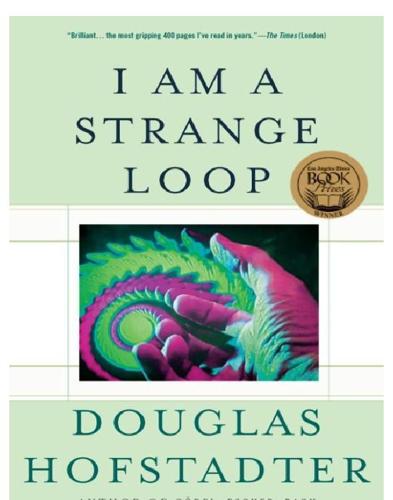
I Am a Strange Loop
by
Douglas R. Hofstadter
Published 21 Feb 2011
And then along came a vast team of mathematicians who had set their collective bead on the “big game” of Fermat’s Last Theorem (the notorious claim, originally made by Pierre de Fermat in the middle of the seventeenth century, that no positive integers a, b, c exist such that an + bn equals c n, with the exponent n being an integer greater than 2). This great international relay team, whose final victorious lap was magnificently sprinted by Andrew Wiles (his sprint took him about eight years), was at last able to prove Fermat’s centuries-old claim by using amazing techniques that combined ideas from all over the vast map of contemporary mathematics. In the wake of this team’s revolutionary work, new paths were opened up that seemed to leave cracks in many famous old doors, including the tightly-closed door of the small but alluring Fibonacci power mystery.
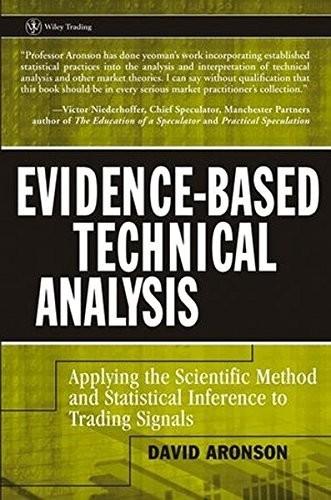
Evidence-Based Technical Analysis: Applying the Scientific Method and Statistical Inference to Trading Signals
by
David Aronson
Published 1 Nov 2006
Denying The Consequent Fallacy: Affirming Consequent If a dog, then has 4 legs. Legs not equal to 4. Therefore not a dog. If a dog, then has 4 legs. Has 4 legs. Therefore dog. FIGURE 3.5 Conditional syllogisms: example. hinted at in the margin of a book in 1665 but not proven until 1994, by Andrew Wiles and Richard Taylor. Inductive Logic Induction is the logic of discovery. It aims to reveal new knowledge about the world by reaching beyond the knowledge contained in the premises of an inductive argument. However, this new knowledge comes with a price—uncertainty. Conclusions reached by induction are inherently uncertain.
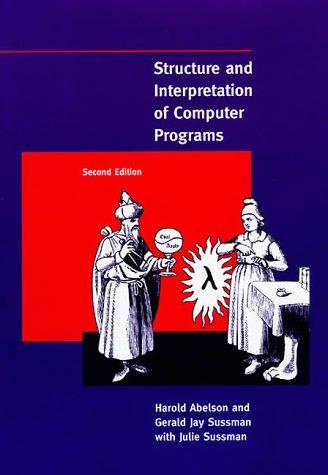
Structure and interpretation of computer programs
by
Harold Abelson
,
Gerald Jay Sussman
and
Julie Sussman
Published 25 Jul 1996
The most famous of Fermat's results – known as Fermat's Last Theorem – was jotted down in 1637 in his copy of the book Arithmetic (by the third-century Greek mathematician Diophantus) with the remark “I have discovered a truly remarkable proof, but this margin is too small to contain it.” Finding a proof of Fermat's Last Theorem became one of the most famous challenges in number theory. A complete solution was finally given in 1995 by Andrew Wiles of Princeton University. 46 The reduction steps in the cases where the exponent e is greater than 1 are based on the fact that, for any integers x, y, and m, we can find the remainder of x times y modulo m by computing separately the remainders of x modulo m and y modulo m, multiplying these, and then taking the remainder of the result modulo m.

Structure and Interpretation of Computer Programs, Second Edition
by
Harold Abelson
,
Gerald Jay Sussman
and
Julie Sussman
Published 1 Jan 1984
The most famous of Fermat’s results—known as Fermat’s Last Theorem—was jotted down in 1637 in his copy of the book Arithmetic (by the third-century Greek mathematician Diophantus) with the remark “I have discovered a truly remarkable proof, but this margin is too small to contain it.” Finding a proof of Fermat’s Last Theorem became one of the most famous challenges in number theory. A complete solution was finally given in 1995 by Andrew Wiles of Princeton University. 46 The reduction steps in the cases where the exponent is greater than 1 are based on the fact that, for any integers , , and , we can find the remainder of times modulo by computing separately the remainders of modulo and modulo , multiplying these, and then taking the remainder of the result modulo .